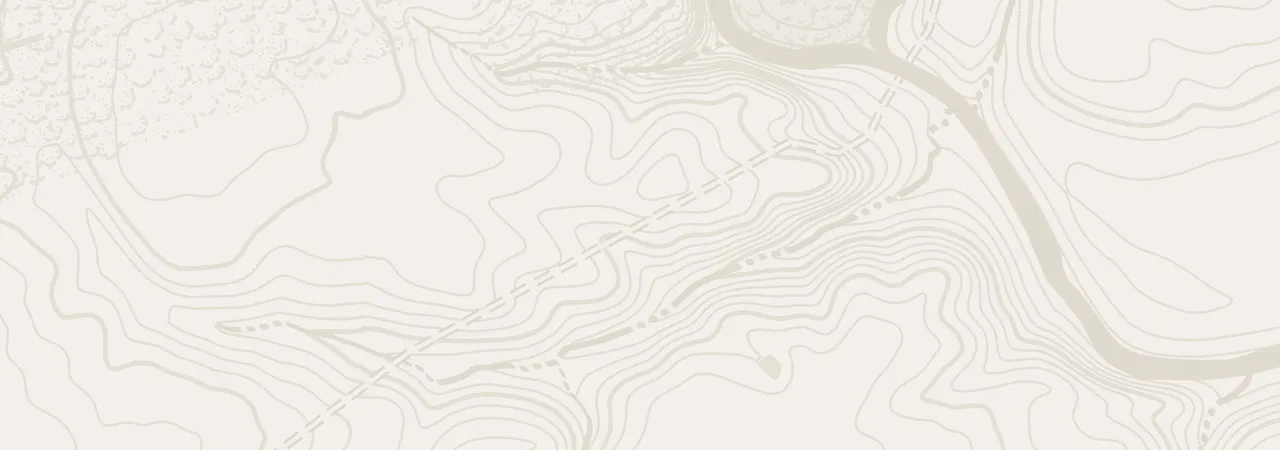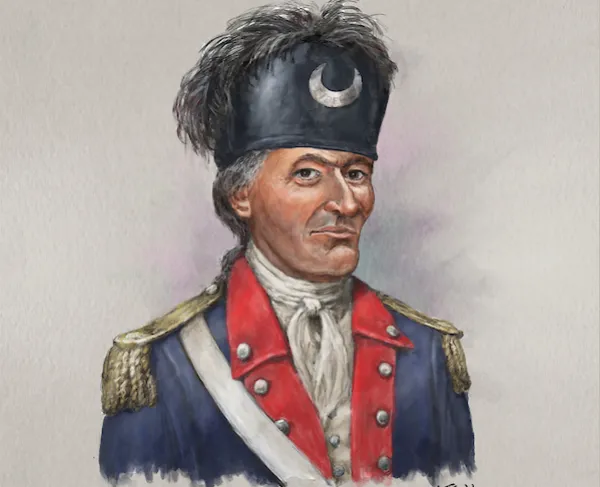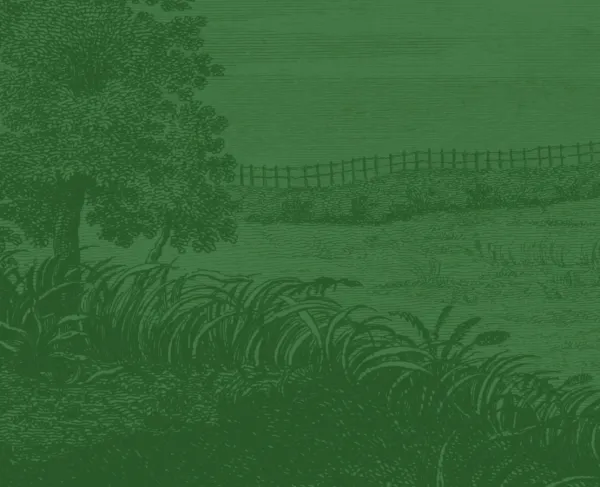
Wadboo Barony
Avenue of the Cedars
South Carolina | Aug 29, 1782
The last major engagement fought by Francis Marion, the "Swamp Fox" during the American Revolution in South Carolina.
As events were playing out in Paris that would see the official end of the American Revolution, the Treaty of Paris was still more than a year away from being adopted and recognized in the United States. Though major battles had ceased since Lord Cornwallis’ surrender at Yorktown in October 1781, a hot war remained fully engaged among the partisan leaders in South Carolina. With the British still holding Charleston under the command of General Alexander Leslie, the foreign presence and the persistence of loyalist raiders meant the war was not winding down for those still committed to harassing the enemy. Leslie could only do so much from the safety of Charleston; he preferred sending foraging parties into the Lowcountry to retrieve vital supplies for his troops. Among the many skirmishes that occurred in 1782, it would be the desire to obtain these much-needed stores that often triggered the last few engagements of the American Revolution in South Carolina.
By August 1782, American Brigadier General Francis Marion’s entire mind, wrote Colonel Henry Lee, was engrossed with “the contrivance of annoyance to his enemy” and “the procurement of subsistence for his men.” Marion, the famed Swamp Fox who’d gained a notorious reputation among the British ranks for his daring raids and ability to evade capture, was now deciding how best to weather the partisan wars while peace negotiations were being deliberated. Understanding that his remaining militia forces were wary of unnecessary bloodshed that risked their lives, he also firmly remained against loyalist partisans while Charleston remained occupied. Establishing his base camp at the seized plantation of Sir James Colleton, known as part of the massive Wadboo Barony, Marion moved along the Lowcountry to assist in efforts to harass British foraging parties. Returning from Georgetown, Marion posted his mixed force of cavalry and infantry at Colleton’s mansion (not to be confused with his cousin, loyalist Sir John Colleton’s plantation at Fair Lawn) on the south side of the Wadboo Creek on a bluff overlooking the swamp and surrounded by the vast property, some twelve thousand acres, that made up the Wadboo Barony. It would be here where Francis Marion would see his last fight during the American Revolution.
British Major Thomas Fraser had been sent by General Leslie to forage the areas along the Cooper River. Fraser and Marion were well-known to each other, with the British officer assuming the American commander was at Georgetown aiding in its defenses. Fraser had about one hundred cavalry and a handful of partisan militia with him as he made his way north. Among these mounted fighters were the South Carolina Royalists and the Black Dragoons, a contingent of former slaves who dawned the colors of Tarleton’s Legion. Unbeknownst to Fraser, Marion had returned from Lenud’s Ferry on August 28, and was informed by Major Daniel Coyer that Fraser was moving beyond Strawberry Ferry northward towards Monck’s Corner. Fraser soon captured a few sentries who informed him of Marion’s encampment at Wadboo Barony. Fraser moved his forces to cross Biggin Swamp and then proceeded southward where he came upon the ruins of Biggin Church; here he found more sentries guarding the bridge over Wadboo Creek. Fraser spelled out his next move, “Watboo Creek being in his [Marion’s] Front & having a Pickett upon the Bridge I did not think it Prudent to Attack him by that Road but moved up that Creek and Crossed Four Miles Higher and came down on his Rear.”
The American commander was now aware Fraser was coming for him. Marion had an estimated 300 soldiers under his command at the Wadboo plantation. Some forty were recently paroled Tories led by Major Micajah Ganey, a fierce partisan enemy of Marion’s, who had recently switched sides and joined the patriots, leaving some within Marion’s ranks to mistrust them. Nevertheless, the Americans divided their forces positioning themselves near and about the plantation’s slave cabins and the main house. Marion would not be able to use his cavalry as their horses were some six miles away. He devised a plan that, “drew up in an avenue of trees before the house a part of my Left Advanced a few paces under cover of three small houses.” With the surrounding lands of the plantation otherwise cleared of trees, any advance by Fraser would be out in open fields. The precise design of the outbuildings is only known through scarce records, including that of soldier and eyewitness William Dobein James, who wrote, “[Marion] occupied the mansion and his men the outhouses, on the west towards the bridge; on the back of the outhouses to the east, and directly in front of the dwelling, there stretched towards the road an extensive avenue of old cedar trees, 30 the trimming of which had been neglected for some years; and their long boughs now descended nearly to the ground. Gen. Marion heard of the approach of Major Fraser with the British cavalry, towards the Santee, in his rear. On this side there was nothing but an open old field for a mile.”
While establishing a line within these trees, Marion sent forth Captain Gavin Witherspoon and a handful of officers who retained their horses to monitor the field for Fraser’s approach. Within minutes, the British cavalry rode upon them from the southeast. More than one hundred mounted partisans from the Royalist and Black Dragoons and a few Loyalist cavalry charged down Witherspoon’s detachment. As they fell back, luring them closer to Marion, the bulk of the American force remained hidden behind the cedars awaiting to ambush. Witherspoon immediately hastened back to the avenue of cedars on the plantation as planned. Eyewitness James continues, “Witherspoon had advanced but little way into the woods beyond the old field, when the reconnoitering party were met by Major Fraser at the head of his corps of cavalry, and were immediately charged. A long chase commenced, which was soon observed by Marion, and he drew up his men under the thick boughs of the cedar trees. As the chase advanced towards him it became more and more interesting. When in full view, either Witherspoon’s horse had failed him, or he fell purposely in the rear to bring up his party, and a British dragoon was detached to cut him down. He advanced until nearly within his sword’s length, and was rising in his stirrups to make sure of his blow, but Witherspoon had eyed him well, and at the instant, Parthian like [rearward], he fired the contents of his gun into his breast. The good omen excited much animation.”
Fraser’s dragoons came up to the avenue; within thirty yards, Marion’s men rapidly fired into them from their hidden positions. As the Swamp Fox would write, “The fire was so well directed…that the Enemy immediately broke and Retreated in Confusion, leaving a Capt’n Robert Gillis and three men and five horses killed.” Fraser repositioned his forces in an open field to the north of the house and buildings, out of musket range for either party. Neither side budged for over an hour with the assumption that a cavalry charge or the advance of Marion’s troops from the safety of the trees would be disastrous. Aside from a handful of casualties, the true loss of the skirmish was the supply wagon for Marion’s forces. As the firefight weighed, the startled driver of the horse-drawn ammunition wagon bolted into the open field. After a failed attempt to retrieve it by a handful of Americans, the wagon was recovered by Fraser. Without more cartridges and his ammunition wagon gone, Marion could not continue the fight. Originally planning to establish a new offensive line and await to ambush the sure-to-return Fraser, by nightfall Marion opted to retreat to St. Stephen where he could resupply. Fraser moved on to Huger's Bridge where he claimed some cattle for General Leslie in Charleston. British casualties were four men killed, eleven wounded, and one captured. Marion had no casualties other than the loss of his ammunition wagon, but an untold number of sentries were taken prisoner.
3
17
This was Francis Marion’s last fight in the field. Major General Nathanael Greene praised his efforts at Wadboo as a "very honorable check you gave the enemy." Marion also praised his small force, particularly the conduct of Major Ganey's former Tory partisans. He remained encamped at Wadboo Barony until the British evacuation of Charleston on December 14, 1782. Following the war, the twelve thousand acre property was seized by South Carolina, subdivided, and redistributed to compensate payment to soldiers of the war. The plantation eventually fell into ruin, being torn down some time in the twentieth century. Today, a historical marker located on the north side of State Highway 402 just over the Wadboo Bridge locates the area of the former barony, and tells of the Swamp Fox’s last stand in the American Revolution.
All battles of the Southern Theater 1780 - 1783 Campaign
Related Battles
300
108
3
17





